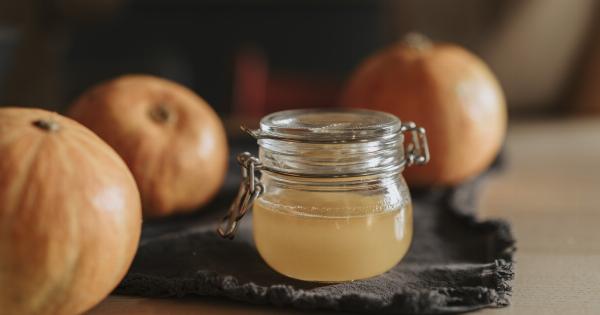Acne has been a problem for humanity since the dawn of time. It’s a common skin condition that affects millions of people worldwide.
Although it’s not a dangerous condition, it causes significant emotional distress and can significantly impact one’s self-esteem. Fortunately, there are many remedies for acne, and apple cider vinegar is one of them. This article will discuss how apple cider vinegar can help with acne and how to use it.
What is Apple Cider Vinegar?
Apple cider vinegar is a type of vinegar made from fermented apple cider. It’s a natural product that contains acetic acid, which gives it a sour taste and pungent smell.
Apple cider vinegar has been used for centuries for culinary and medicinal purposes. It’s rich in vitamins and minerals and has numerous health benefits.
How Does Apple Cider Vinegar Help with Acne?
Apple cider vinegar has several properties that make it effective in treating acne:.
- Antibacterial Properties: Apple cider vinegar contains acetic acid, which has antibacterial properties. It helps kill bacteria on the skin that causes acne.
- Astringent Properties: Apple cider vinegar has astringent properties that help tighten the skin pores. This reduces the secretion of oil and sebum that causes acne.
- Anti-Inflammatory Properties: Apple cider vinegar has anti-inflammatory properties that help reduce inflammation on the skin that causes acne.
- Exfoliating Properties: Apple cider vinegar contains alpha-hydroxy acids (AHAs), which help exfoliate the skin. This removes dead skin cells and unclogs pores, preventing acne.
How to use Apple Cider Vinegar for Acne
Here are different ways to use apple cider vinegar for acne:.
1. Diluted Apple Cider Vinegar Toner
To make a diluted apple cider vinegar toner, mix one part of apple cider vinegar with three parts of water. Apply the toner to your face using a cotton ball. Leave it on for 5-10 minutes, then rinse it off with warm water.
Do this once a day, preferably at night.
2. Apple Cider Vinegar and Honey Face Mask
Mix one tablespoon of apple cider vinegar with one tablespoon of honey. Apply the mixture to your face and leave it on for 10-15 minutes. Rinse it off with lukewarm water. Do this once a week.
3. Apple Cider Vinegar and Green Tea Toner
Brew a cup of green tea and let it cool. Add one tablespoon of apple cider vinegar to the tea. Apply the toner to your face using a cotton ball. Leave it on for 10 minutes, then rinse it off with warm water. Do this twice a week.
4. Apple Cider Vinegar and Baking Soda Exfoliator
Mix one tablespoon of apple cider vinegar with one tablespoon of baking soda. Apply the mixture to your face and massage it gently for 1-2 minutes. Rinse it off with warm water. Do this once a week.
5. Apple Cider Vinegar and Clay Mask
Mix one tablespoon of apple cider vinegar with one tablespoon of clay powder. Add some water to make a paste. Apply the mixture to your face and leave it on for 10-15 minutes. Rinse it off with lukewarm water. Do this once a week.
Precautions
Apple cider vinegar is a natural product, but it can cause skin irritation and dryness in some people. Therefore, it’s essential to dilute the vinegar before using it on the skin. Also, don’t apply the vinegar on open wounds or irritated skin.
If you experience severe skin irritation or rashes, stop using the vinegar and seek medical advice.
Conclusion
Apple cider vinegar is a natural and effective way to treat acne. It has antibacterial, astringent, anti-inflammatory, and exfoliating properties that can help improve the skin’s condition.
There are different ways to use apple cider vinegar for acne, including toners, masks, and exfoliators. However, it’s essential to dilute the vinegar before using it on the skin and to follow the precautions to prevent skin irritation.






























